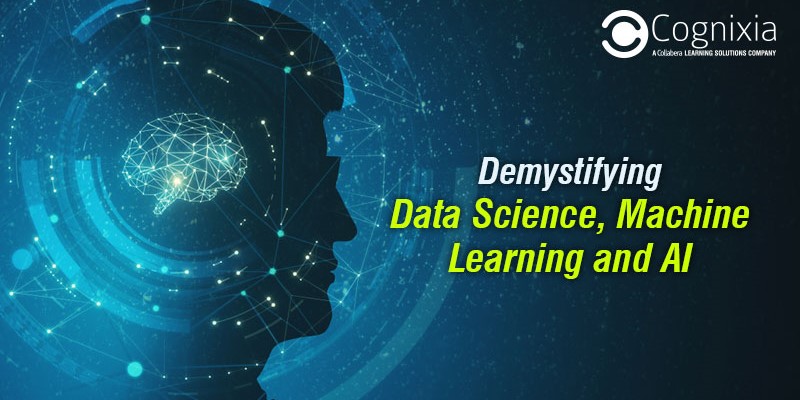An intuitive understanding of technologies and their nuances can often be difficult to gather.
This is especially true about technologies like Data Science, Machine Learning, & AI which have been used, over-used and sometimes hyped to fulfill marketing objectives. It is important to understand that though these fields overlap, they cannot be used interchangeably.
Putting it in simple words, data science generates insights while machine learning generates predictions. AI, on the other hand, generates actions.

Getting insightful with Data Science
Data science is one of the best disciplines to gain different type of insights – descriptive, exploratory, inferential, casual, predictive and mechanistic insights. Data science includes statistical inference, design of experiments, software engineering, data visualization, specific domain knowledge and effective communication.
What sets data science apart from related fields like machine learning and AI is the need for human involvement in the loop. There is always a need for someone to comprehend the insights, make sense of the graphs and figures, and take conclusive decisions based on the insights derived.
Credible predictions through machine learning
Machine learning ensures that the predictions made from a large amount of gathered data are as accurate as possible. Data science and machine learning do overlap a great deal. For instance, logistic regression is applied in both data science and machine learning. However, in data science, it is used to derive insights about relationships of different factors while in machine learning, it yields predictions.
Industry practitioners often switch between the two disciplines and data scientists do commonly use machine learning. In an e-learning application, for example, traffic data could be modelled to determine which customers are likely to look for a particular product. This is an application of machine learning. When summaries and visualizations are devised based on the data traffic, it is an application of data science.
Automating actions with artificial intelligence
AI involves imparting human-like cognitive intelligence to computers. Any machine that carries out a task or action in an intelligent manner, with the use of algorithms is said to apply AI. An important distinction between AI and the other two disciplines is the ‘actionable event’ part. AI is extensively used in robotics, control theory, gaming algorithms, bots and reinforcement learning.
Consider the analysis of customer data for a particular product. Suppose, it is discovered that certain customers are likely to purchase more than others (insight). Numerical and graphical outputs are obtained that enable executives to make predictions and/or come to conclusions; however, it may not lead to any particular action. This would be an application of data science with a mix of machine learning but not AI.
Combining data science, machine learning and AI
Suppose a thermostat with self-adjusting capabilities is being built. The three technologies then, could be utilized as follows:
- Machine Learning: A large data set of environment-related values to devise an algorithm that would predict the desirable temperature ranges and arrive at a fixed value
- Artificial Intelligence: Once a particular environmental condition is met, the thermostat performs an automated action – adjusting to a fixed temperature from the respective range
- Data Science: In the tests with the thermostat, sometimes the temperatures are found to be unsuitable for people in their homes, especially during the wee hours of the day. After studying the test data, insights are derived that the varying body temperatures were not taken into consideration. Thus, there is a need to construct a better dataset that would include data on body temperatures. The entire process is then repeated.

